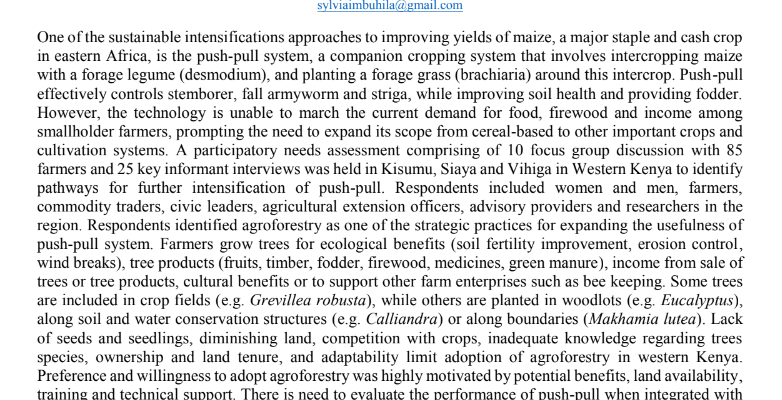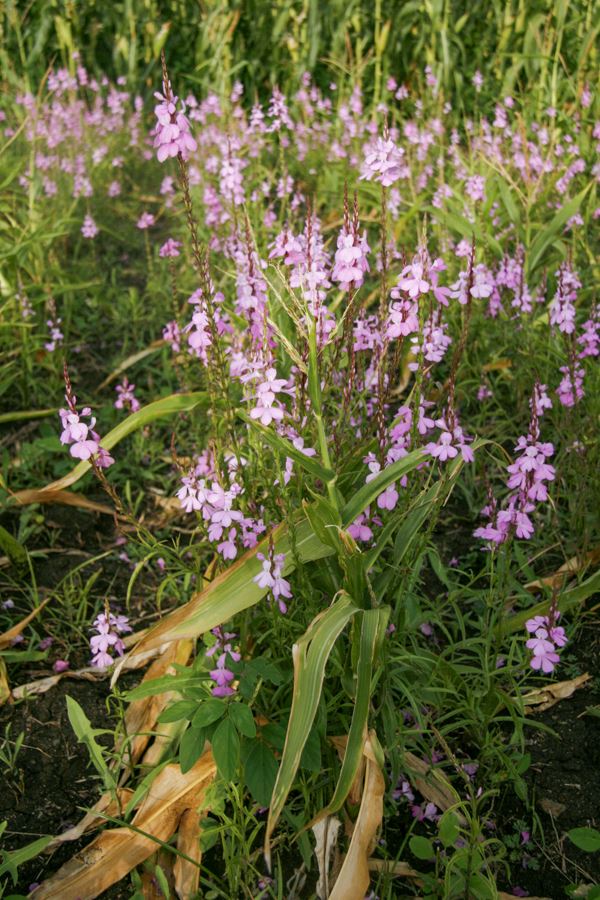One of the sustainable intensifications approaches to improving yields of maize, a major staple and cash crop in eastern Africa, is the push-pull system, a companion cropping system that involves intercropping maize with a forage legume (desmodium), and planting a forage grass (brachiaria) around this intercrop. Push-pull effectively controls stemborer, fall armyworm and striga, while improving soil health and providing fodder. However, the technology is unable to march the current demand for food, firewood and income among smallholder farmers, prompting the need to expand its scope from cereal-based to other important crops and cultivation systems. A participatory needs assessment comprising of 10 focus group discussion with 85 farmers and 25 key informant interviews was held in Kisumu, Siaya and Vihiga in Western Kenya to identify pathways for further intensification of push-pull. Respondents included women and men, farmers, commodity traders, civic leaders, agricultural extension officers, advisory providers and researchers in the region. Respondents identified agroforestry as one of the strategic practices for expanding the usefulness of push-pull system. Farmers grow trees for ecological benefits (soil fertility improvement, erosion control, wind breaks), tree products (fruits, timber, fodder, firewood, medicines, green manure), income from sale of trees or tree products, cultural benefits or to support other farm enterprises such as bee keeping. Some trees are included in crop fields (e.g. Grevillea robusta), while others are planted in woodlots (e.g. Eucalyptus), along soil and water conservation structures (e.g. Calliandra) or along boundaries (Makhamia lutea). Lack of seeds and seedlings, diminishing land, competition with crops, inadequate knowledge regarding trees species, ownership and land tenure, and adaptability limit adoption of agroforestry in western Kenya. Preference and willingness to adopt agroforestry was highly motivated by potential benefits, land availability, training and technical support. There is need to evaluate the performance of push-pull when integrated with woody perennials.
Authors: Buleti Sylvia, Were Samuel, Gichua Moses and Kuyah Shem
Contact address: sylviaimbuhila@gmail.com
Institution: Department of Botany, Jomo Kenyatta University of Agriculture and Technology (JKUAT)
Twitter name of the institution: @DiscoverJKUAT
Twitter link: https://x.com/DiscoverJKUAT
Available downloads:
Towards further intensification of push-pull technology with agroforestry


